Glitchonomicon: La Revelación Digital del Arte del Caos
Marta Pérez-Campos
UPV/EHU: University of the Basque Country, Spain
scroll 
Glitchonomicon is an experiment that started by asking Chat GPT 3.5 to retrieve information about Glitch Art artworks. The prompts, written in Spanish, generated descriptions of supposedly real works, which later proved to be non-existent but made by real artists.
This bug was the beginning of an exploration of the biases intrinsic to AI systems from the perspective of the user. To do so, I decided to create a fake exhibition with all the artworks and artists generated by using DALL-E 2 and ChatGPT.
Apart from that, both the title of the exhibition and the presentation text of the catalog have also been generated using Chat GPT.
-
All texts and images are collected on a website and in a catalog, in which also appear the prompts with which they have been created.
- Experience Glitchonomicon
The main motivation behind Glitchonomicon is to exploit bugs in AI-based applications and to see what information we can extract about these systems by exploring these bugs.
Marta Pérez-Campos
Marta PCampos (Zaragoza, Spain) is currently a PhD student in the Contemporary Art Research Program at the UPV/EHU: University of the Basque Country (Bilbao, Spain) and artist in residence at Casa de Velázquez (Madrid, Spain). In recent years she has participated in international congresses and she has developed and exhibited her artistic projects in national and international art centers such as the Ars Electronica Festival (Linz, Austria), Etopia: Centro de Arte y Tecnología (Zaragoza, Spain), MUSAC (León, Spain), Instituto Cervantes (Madrid, Spain) or at IAMAS: Institute of Advanced Media Arts and Sciences (Gifu, Japan).
Ludic Aesthetics Online Exhibition
Ludic Aesthetics Online Exhibition presents 15 works that explore ludic aesthetics as an essential way of reflecting, challenging, and creating meaning in society and techno-culture. The relationships between the works offer a diverse and dynamic showcase of playfulness at its core in creative coding and computation.
We invite you to explore how artists, academics, researchers, and practitioners explored and interpreted such a notion in their works.
View all projects


